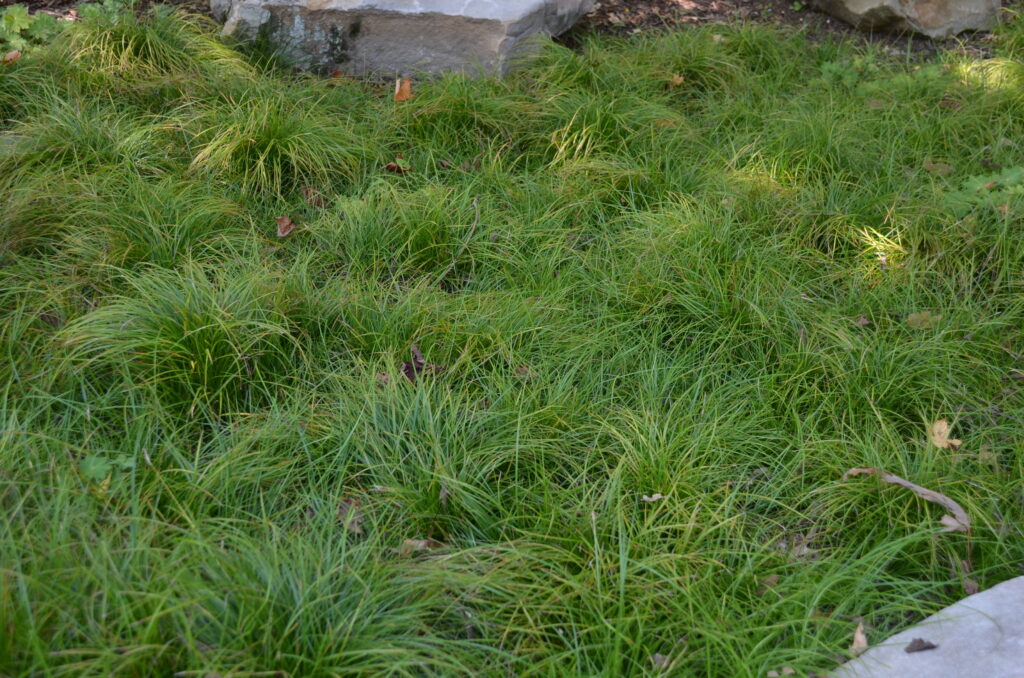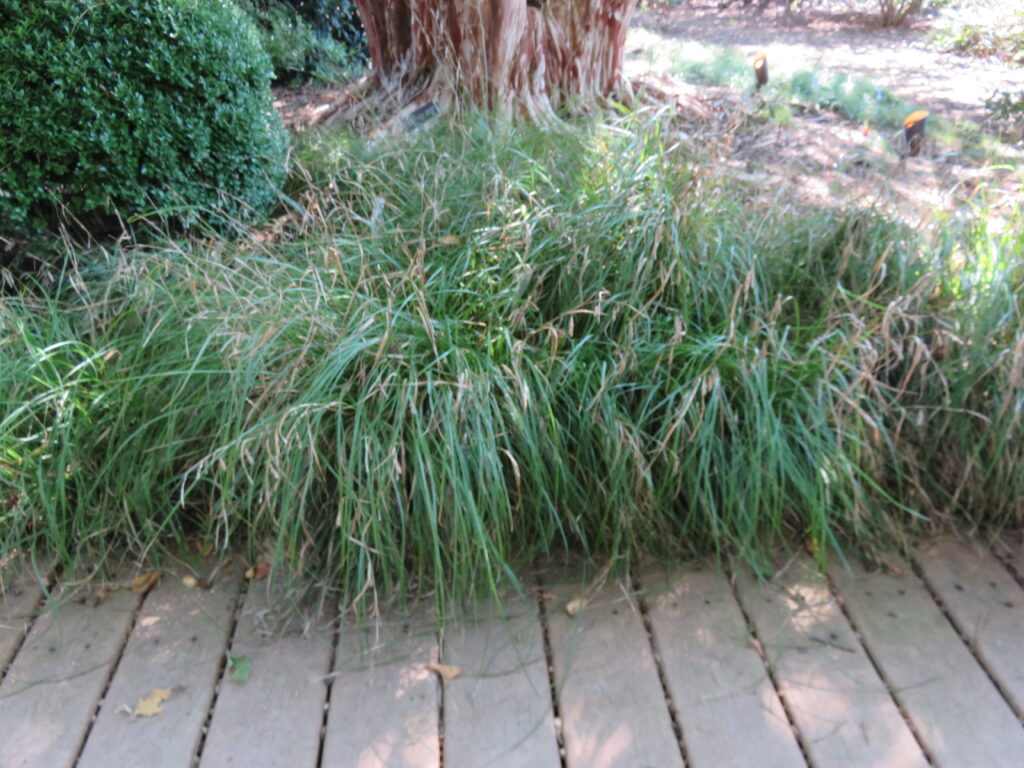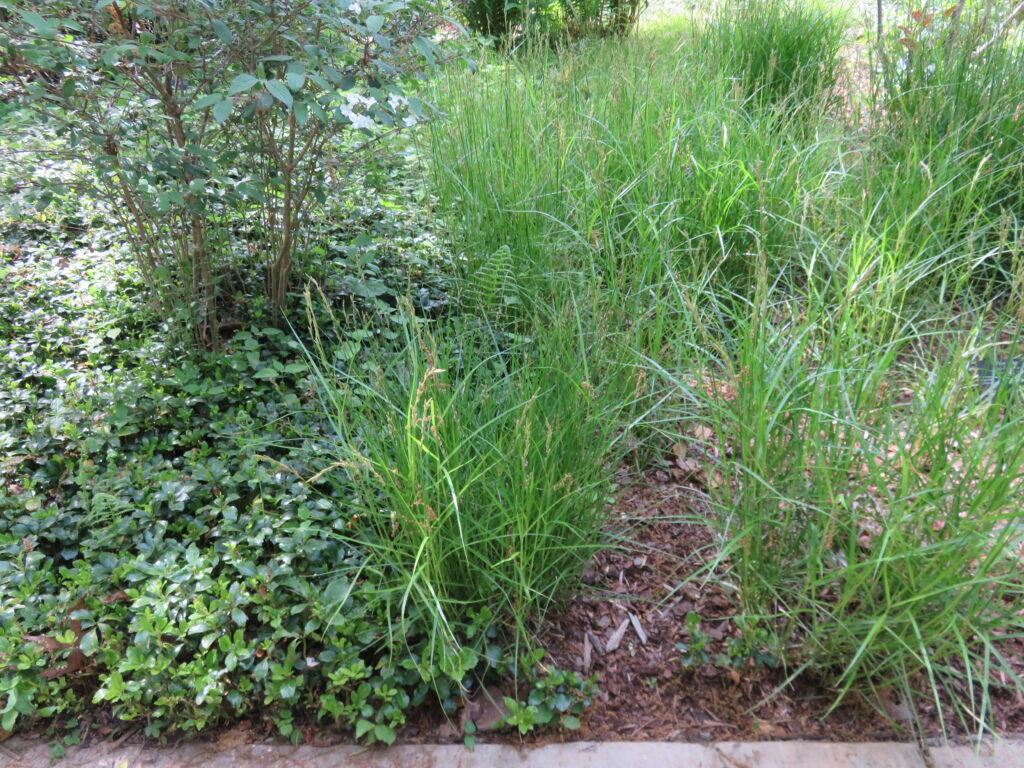
The native plant research team at Mt Cuba Center in Hockessin, DE has recently published the results of a 3-year Carex (sedge) study in which they evaluated 70 species and cultivars. The study included a number of under-planted Carex species and varieties.
One grouping was grown in full sun and a second planting was tested under 60% shade cloth. Sedges were grown in clay soil that had a high moisture retention and high moisture retention. The study determined the optimum environment for each variety. Ratings took into account many factors including habit, floral display, disease resistance, hardiness, and foliage quality.
In a separate one-year study, sedges were evaluated as a sustainable alternative in lawn and turfgrass areas. Some were mowed or others not. Some low-growing species needed mowing only one or twice annually.

Carex varieties that grew much like traditional grass and could be mowed for improved aesthetics and foot traffic included: Carex woodii (Wood’s sedge), Carex eburnea (bristle-leaf sedge), Carex socialis (low woodland sedge), Carex pensylvanica (Pennsylvania sedge), and Carex jamesii (James’ sedge).
An underutilized species, Wood’s sedge (C. woodii) was the top performer in the entire study. Wood’s is similar to the popular C. pensylvanica also with a low-growing slow-spreading habit. Wood’s sedge is superior to C. pensylvanica from both garden utility and ornamental standpoints. Wood’s sedge forms a denser mat of foliage than C. pensylvanica and is better at suppressing weeds. Wood’s fine-textured foliage emerges an attractive blue-green hue in spring, changing to green in late spring and summer. A bonus eye-catching feature is a carpet of straw-colored flowers provides the perfect complement to other spring wildflowers.
Wood’s sedge is found in forests in the midwestern and eastern U.S. and performs equally well in both shade and sun. It was a top performer in the mowing evaluation, developing an attractive dense mat, and could be a suitable lawn substitute.
Mt. Cuba’s Top-Performing Carex:
- Carex woodii (Wood’s Sedge)
- Carex cherokeensis (Cherokee Sedge)
- Carex bromoides (Common Brome Sedge)
- Carex haydenii (Hayden’s Sedge)
- Carex stricta (Upright Sedge)
- Carex emoryi (Emory’s Sedge)
- Carex sprengelii (Long-Beaked Sedge)
- Carex pensylvanica (Pennsylvania Sedge)
- Carex pensylvanica ‘Straw Hat’ (Straw Hat Pennsylvania Sedge)
- Carex muskingumensis ‘Little Midge’ (Little Midge Muskingum Sedge)
- Carex albicans (White-Tinge Sedge)
- Carex jamesii (James’ Sedge)
- Carex muskingumensis ‘Oehme’ (Oehme Muskingum Sedge)
- Carex crinita (Fringed Sedge)
- Carex leavenworthii (Leavenworth’s Sedge)
- Carex plantaginea (Plantain-leaf Sedge)

Read the complete report which includes descriptions of all 70 Carex species and varieties @ https://mtcubacenter.org/trials/carex-for-the-mid-atlantic-region/

 Posted in
Posted in 
